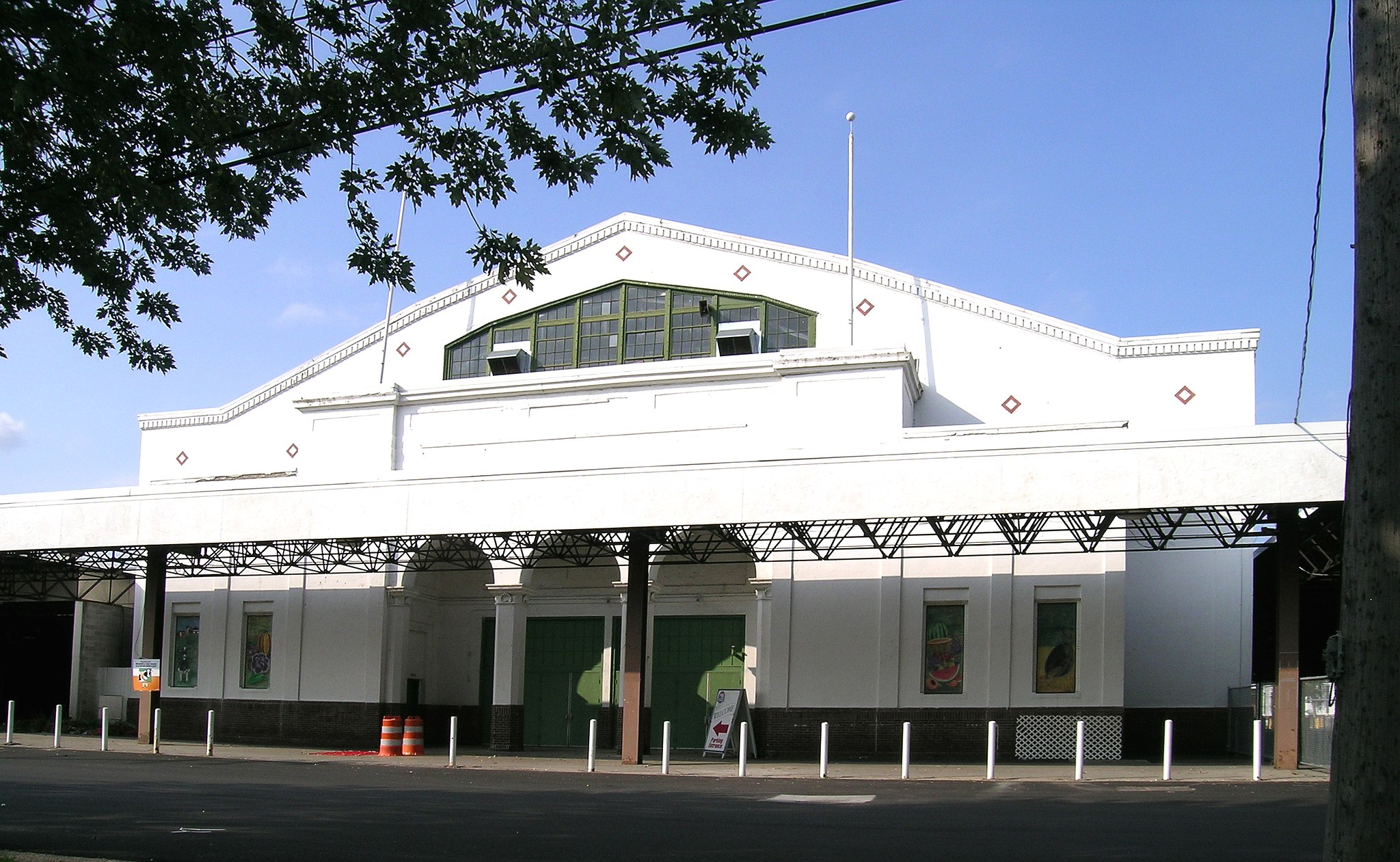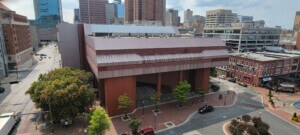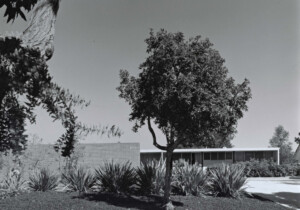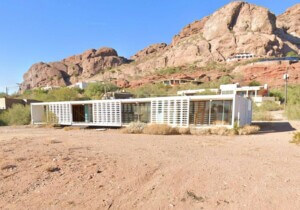Most, if not all, of the historic buildings remaining at the old Michigan State Fairgrounds in Detroit will be demolished to make way for a planned $400 million Amazon distribution center that was announced last week.
As reported by the Detroit Free Press, at least three of the buildings that will be razed—the iconic Michigan State Fair Riding Coliseum (1922), the Dairy Cattle Building (1924), and the Agricultural Building (1926)—are listed on the National Register of Historic Places. While highly desirable, the designation does not grant buildings immunity from being destroyed to make way for new development. All three white stucco structures, designed in the faddish-at-the-time neoclassical revival style by architect Lynn W. Fry, were added to the register in 1980.
Another historic structure at the fairgrounds, a modest wooden abode that served as the residence of a young Ulysses R. Grant for a brief spell in the mid-19th century, is already in the process of being prepped for relocation to its new home in the Eastern Market neighborhood where it will be restored and operate as an educational center. The home has been relocated a handful of times in its very long existence and had been open at the fairgrounds since 1938 in two different locations as a period-decorated attraction. Another landmark structure at the fairgrounds, the World’s Largest Stove, self-immolated in 2011.

Established in Detroit in 1849 after first being held in Ann Arbor a decade prior, the Michigan State Fair is one of oldest official state fairs in the United States (some might say the oldest) although it wasn’t held at its longtime (and now-abandoned) home at 8 Mile and Woodward Avenue until 1905. In 2009, while Detroit was in the throes of recession-accelerated economic turmoil that eventually led to the largest municipal bankruptcy filing in history four years later, former Michigan Governor Jennifer Granholm vetoed legislation that would have funded the annual event. And so, the Michigan State Fair, in its then-current form ceased to exist, and the fairgrounds have been fair-less ever since. A privately-funded version of the fair has been held further out in the suburbs since 2013. The 2020 edition of the fair, kicking off next month, will be held virtually for obvious reasons.
Since the fair left town, the expansive property has been ripe for redevelopment. In April 2019, the state sold 142 acres of the fairgrounds site for $7 million to the city just weeks just after a small, 16-acre chunk of the property was sold to a real estate development company owned by Michigan-born basketball legend Magic Johnson, with plans to erect a mixed-use development. More recently, the sprawling vacant property has been used as a makeshift COVID-19 testing site.
Last week’s sale of the 142 acres owned by the city to Hillwood Investment Properties and the Sterling Group for $9 million was welcomed by Detroit officials, given that the transformation of the fairgrounds has been a long time coming. And it doesn’t hurt that the main tenant being eyed for the new development, Amazon, is expected to be a major job creator with 120,00 new warehouse positions being generated, per the Detroit Free Press.
“This was the single largest development property left in the City of Detroit and what Detroiters need are jobs,” said Duggan at a press conference held last week to announce the sale. “We need good-paying jobs and jobs of the future. It [the property] cost us $7 million and I wanted control of this site.”
In total, the massive Amazon warehouse is planned to encompass nearly 4 million square feet. Parts of the just-sold property not being populated by the Seattle-headquartered e-retail behemoth will be home to auto-part suppliers and other businesses.
As for the fairground landmarks that will likely be razed, Duggan admitted at the press conference: “I think they’re probably all going to get knocked down,” he said. “We’ve all got emotional attachments, but in the last 10 years, not a single person has been able to figure out how to use these old agricultural buildings in a way that follows a business plan.”
Detroit City Council has yet to approve the plan but is expected to do so next month, allowing construction to kick off as soon as the end of October according to the Detroit News. The planned distribution hub would join nine other similar Amazon facilities in the Detroit metro area that are operating, planned, or under construction.











